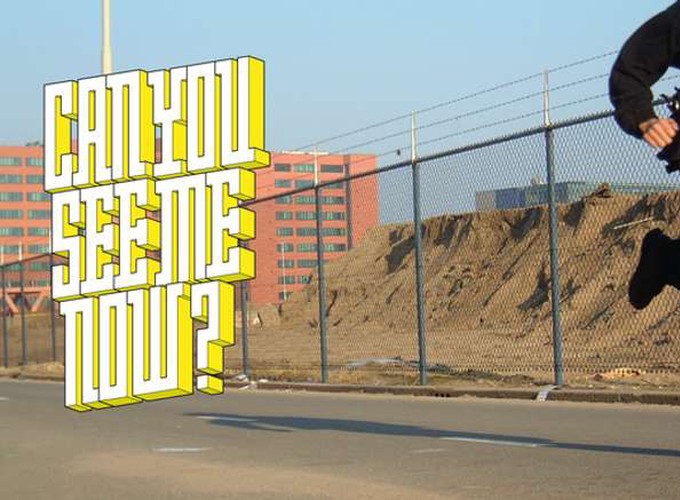Reimagining Can You See Me Now? by Blast Theory
Imagine a game where the streets of your city become the playing field, and online players must evade real-world runners tracking them down. This was the premise of Can You See Me Now?, a groundbreaking location-based game by Blast Theory that blurred the lines between digital and physical spaces. Now, two decades later, we’ve had the chance to bring it back for a new era.
Many of you may be familiar with Blast Theory, a group that holds a near-legendary status in the immersive arts scene dating back to the 1990s. One of their most famous early experiences, Kidnap, allowed players to purchase a lottery ticket, with the possibility that they could be randomly chosen to be kidnapped at any moment. This bold and experimental approach cemented Blast Theory as pioneers in the field of interactive performance and game design.
Pioneering Location-Based Games
Over the past 30 years, Blast Theory has created many seminal works in immersive and interactive art. They have collaborated extensively with the Mixed Reality Lab at the University of Nottingham to produce some of the earliest location-based games, including Can You See Me Now? and its follow-up, Uncle Roy All Around You.
Can You See Me Now? (2003)
Can You See Me Now? is a hybrid digital-physical game that plays like a high-tech version of hide and seek. The game involves two groups:
- Runners: Individuals in the real world who physically navigate city streets.
- Players: Online participants who hide within a virtual replica of the same city.
Originally, the game was built on custom PDA hardware and early GPS devices, pushing the boundaries of what was possible with technology at the time.
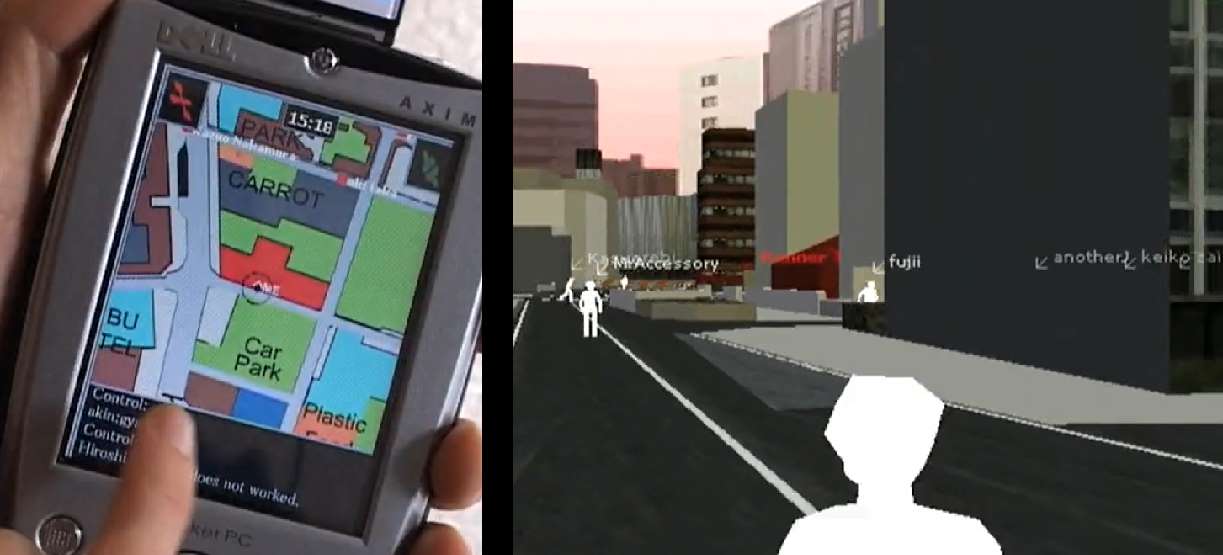
Personal Collaborations and Escape Room Experiments
Ben Neal and I were delighted to be invited to work on the reimagining of CYSMN. We handled the technical development working closely with Nick and Kizzie of Blast Theory.
Ben and I have collaborated on multiple projects since our days as artists-in-residence at Birmingham Open Media. One notable collaboration involved teaching students how to create escape rooms for Market Hall Museum in Warwick. We then ran public events where people played these student-designed escape rooms.
One of the escape rooms we built together, Deep Secrets, became a transportable teaching tool, fitting inside a briefcase and a lockbox. It provided a 40-minute experience, making it ideal for pop-up events introducing people to escape room design. I believe I still have a set of these briefcases somewhere in case we ever want to run it again!
Updating Can You See Me Now? for a New Era
Blast Theory successfully Kickstarted CYSMN in summer 2024.
Technology has advanced dramatically in the last 20 years. What once required custom GPS setups and unusual Personal Digital Assistants (PDAs) with custom hardware can now be achieved using a standard smartphone. Blast Theory wanted to modernise Can You See Me Now?, making it faster and easier to deploy in new cities — for festivals or special events.
There’s a great paper from 2002 which covers this in more detail. I’ve taken some images from it just to remind how far back in technology terms 2002 was! It seems like we’ve had iPhone style smart phones forever - but it wouldn’t be for another 5 years that iPhone (late 2007) and Android (late 2008) appeared in the UK.
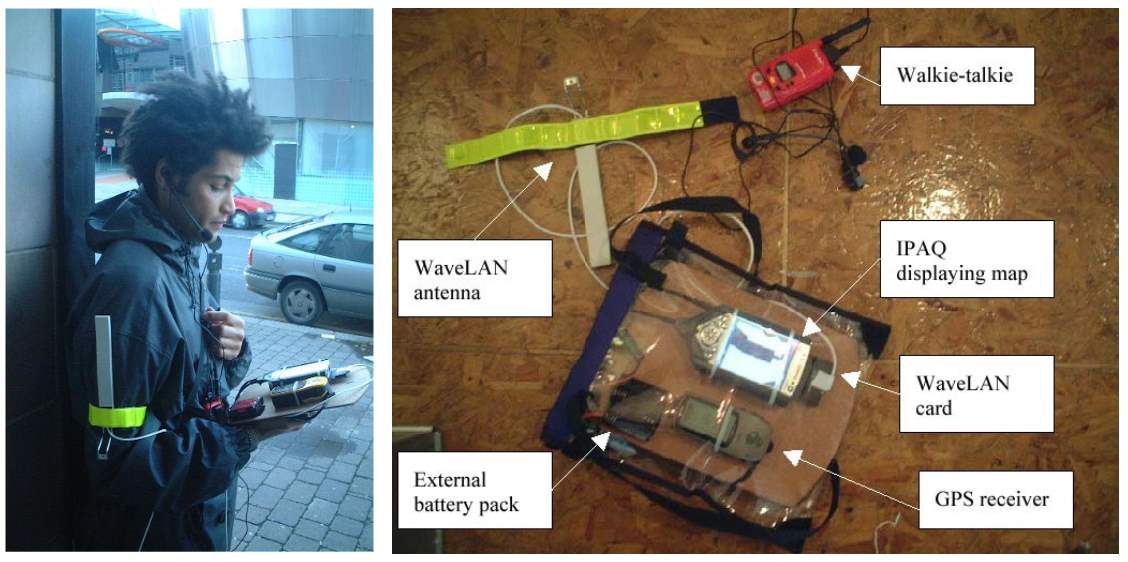
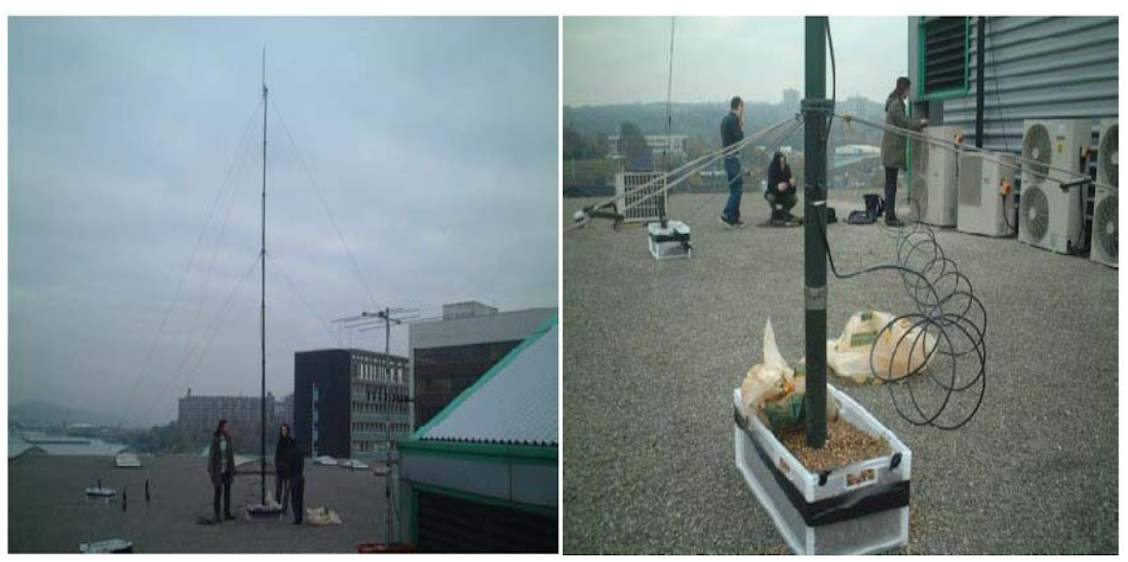
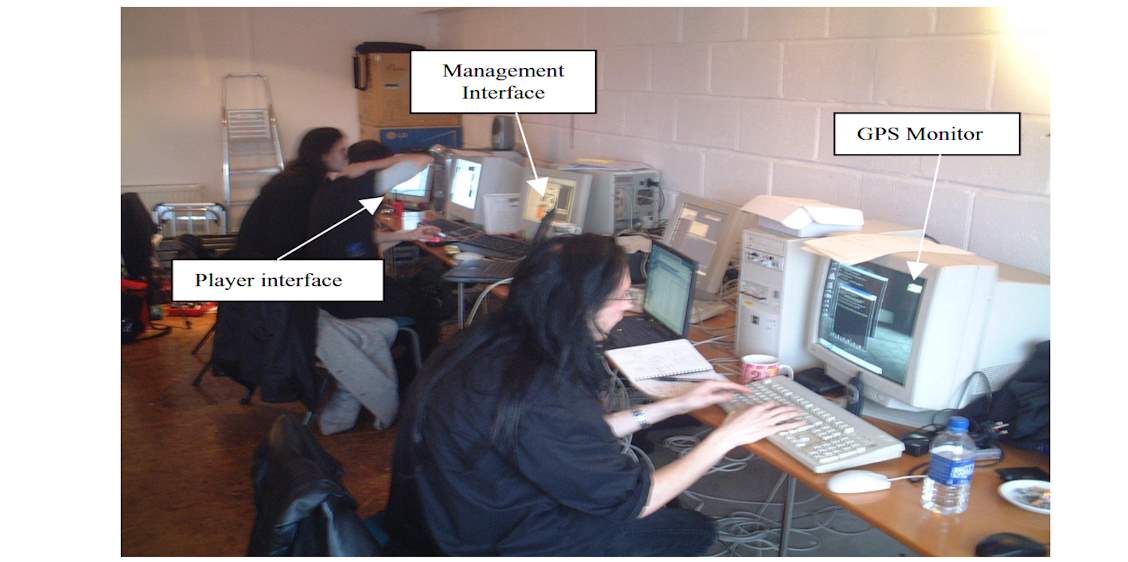
CYSMN was originally developed in a bunch of obsolete web technologies (Macromedia Shockwave anyone?). The new version is a Unity App. For the multiplayer systems we used Photon Fusion and Photon Voice and AWS for sharing of photos and log data.
A key part of this modernisation is integrating online mapping systems. However, to ensure fair gameplay, we also create custom collision maps, defining where players and runners can move. This helps balance the game, as physical obstacles like main roads may slow down runners but not affect online players.
The real and virtual
The game-play is the same as the original. Runners are in the real-world trying to catch players in virtual copy. Runners and Players have different ways to exploit their versions - e.g. players are not constrained by live traffic.
Blast Theory custom edit the virtual world - to limit where players can run - essentially Level Designing for a fun experience.
When runners ‘catch’ a player - they take a photo of that real-world location and it is immediately shared with the player. This is a very important concept within the game as it helps to connect the virtual and real spaces together. When you view the high-score table you can click on each player to see where they were caught.
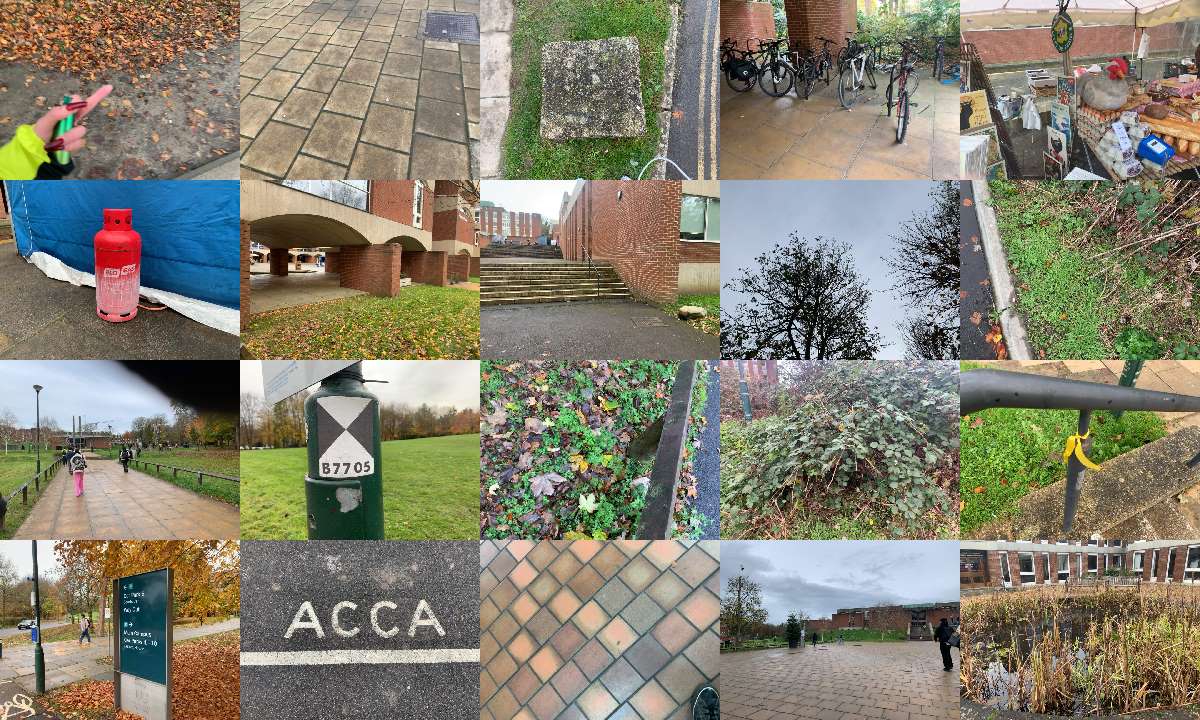
What has changed?
Running on Modern hardware. Originally, the players used a web-site on a desktop PC to take part. The new version would target smart-phone devices. Having access to considerably more computing power and sensors was a huge benefit - however, it also brings with it the usual challenges of multi-platform development (Apple & Android). We also had to deal with much smaller screen sizes (although probably higher resolution) and simplified touch-screen controls - a mouse and keyboard combination is much simpler for 3rd person games.
A single Unity App runs all 3 components. The runner, player and ‘controller role’ are all handled by a single app. This has additional security concerns since you’re giving the ‘controller’ version to all players.
Using existing technologies has positives and negatives. Photon did a lot of the heavy lifting for us. However, as CYSMN is not a traditional multi-player game we needed to bend the technology to fit the game. It also couldn’t handle the photo sharing so that needed to go via Amazon Web Services.
Observer mode - we limit the number of players in the game at any point - however, we want to let the players observe the game until their turn is up. In the original CYSMN - there was a read-only version of the players movement which could be shared. However, in Photon - these observers take up ‘player slots’. We didn’t want to reinvent a read-only version - so instead we live-stream a video.
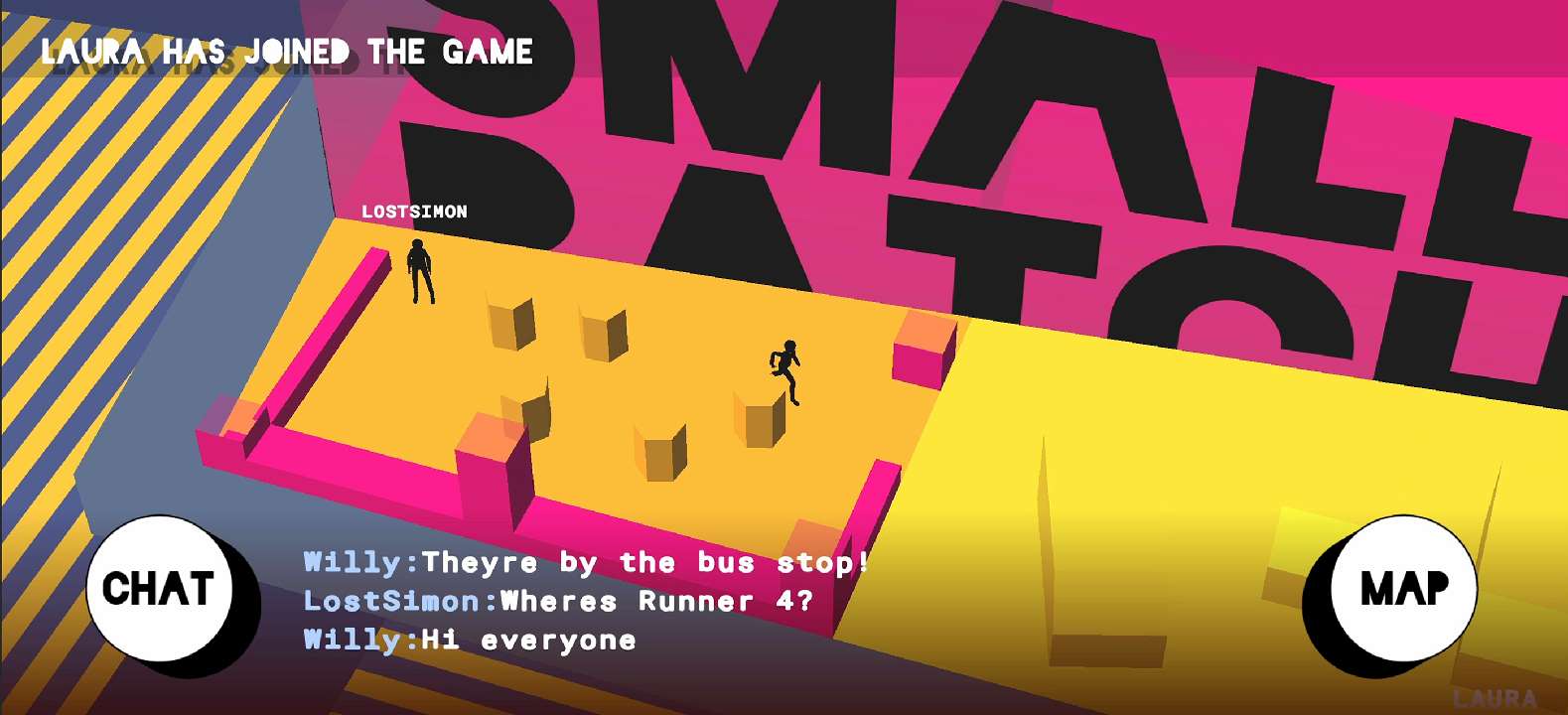
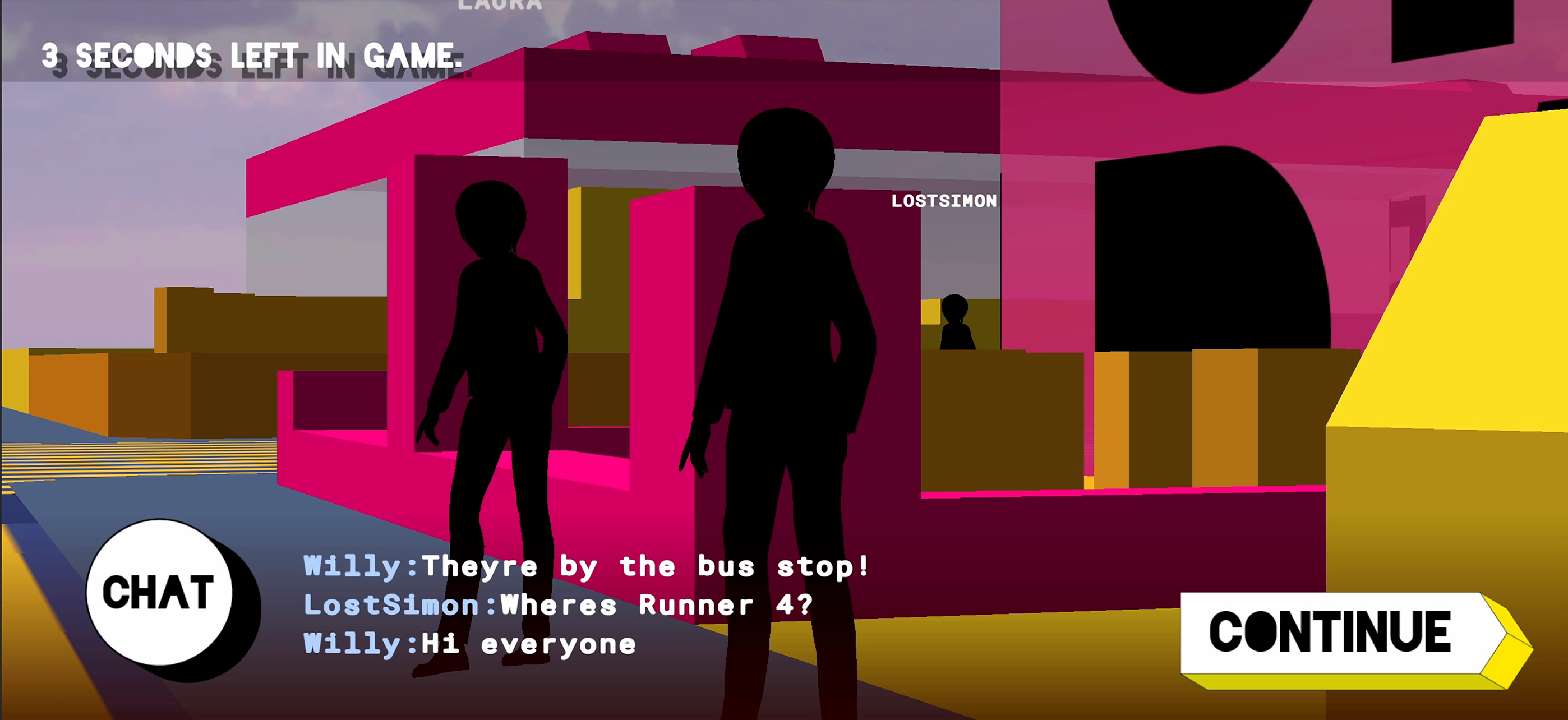
The Role of Live Commentary
The game features two distinct communication methods:
- Text Chat – Visible to all, but only players can send messages.
- Live Voice – Only runners can speak, but everyone can hear them.
Ben and I have tested the game on the streets of Birmingham, playing all roles ourselves as we ran around with an collection of phones under our arms.
And while this was fun, I didn’t fully appreciate the genius of the game until we had a full playtest. Usually, even when a game is in development and isn’t much fun - I can see past that to when the ‘fun will come’.
It wasn’t until a playtest in Brighton, with Matt (Blast Theory founder who has also been a former runner from the original version), that I saw the brilliance of the experience.
The magic of Can You See Me Now? truly comes to life through the runners’ live commentary. A skilled runner doesn’t just chase players - they narrate the pursuit, name-checking players and reacting in real-time. This creates a sense of urgency and immersion that makes the game exhilarating. It’s honestly much more exciting than I expected when you get noticed by the runners - almost like getting a shout-out on the radio.
Playtesting Pain
One of the most painful bits of building a multiplayer experience is testing and then fixing issues that you find. Recreating issues can be hugely time consuming.
You need at least the controller, runner and player. So, three devices set up (with the latest version of the code). It might need an iOS and a particular Android device. You either need to run around a real physical location (while also being able to see whats happening on the server and back-end). You can also fake this to some extent - some tests we spoofed the GPS locations - so we could at least stay indoors - but that’s not a true test.
And then once everything is in place you need to recreate the exact circumstances that cause the issue. And hope you gather the right information that allows you to solve the problem and retest it after.
There’s just a lot of moving parts and some bugs / issues don’t appear without a specific set of steps or combination of hardware or network conditions.
Scaling the play-testing
And while this allows you to test a setup with 1 runner and 1 player - this doesn’t test the real-world situation of 50 players with maybe 10 runners. So, in order to help with this I created some fake players / runners (these log into the world and just run around randomly). Using simple batch scripts you could launch 10 of these on a single machine (more than 10 and the machine struggled to keep up).
This was invaluable for testing with larger number of players and also server load over time. Whenever we had a machine spare we’d leave the fake team logged in and running around for a few hours - just to see if they could create issues - which we could then fix.
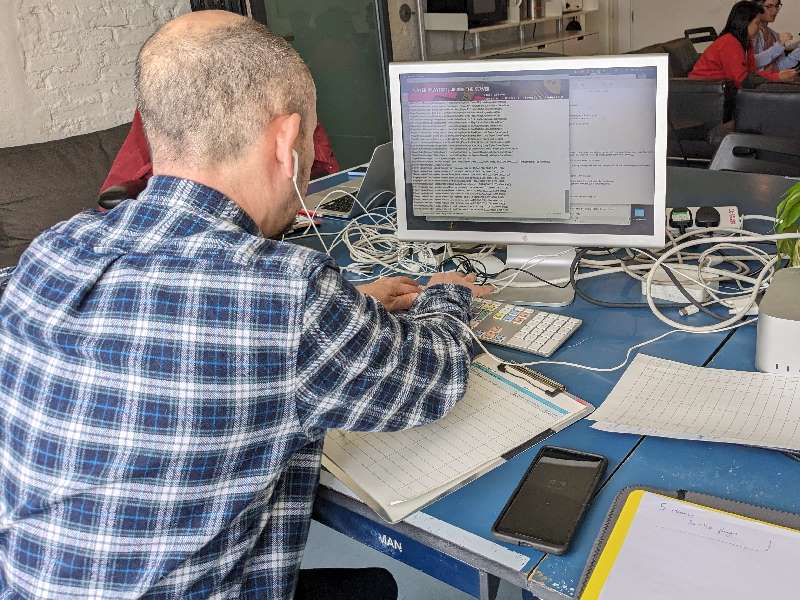

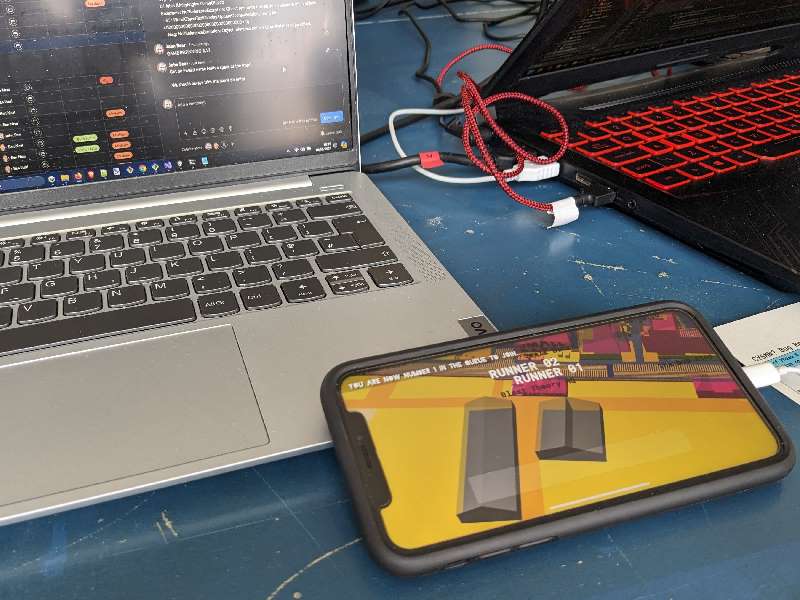
Final Thoughts
Blast Theory has always been at the cutting edge of immersive digital experiences. Updating Can You See Me Now? for modern hardware presents an exciting opportunity to reintroduce this classic game to new audiences. With current technology, it has the potential to be deployed faster, reach more players, and deliver an even more immersive experience than before.
It was great working on the tech side with Ben again! Despite once working in very large development teams in the Games Industry I now mostly work alone - so it was great to have someone to share the development load with and to talk over more thorny challenges. We settled into each taking the lead on front-end and back-end but then able to switch between as a second pair of eyes was needed or one of us was unexpectedly free.
Blast Theory were an absolute joy to work with. Nick is super bright and knowledgable and really fun to have creative and technical discussion with. Kizzie did an incredible job of keeping everyone on track (tough when working with creatives) so we actually managed to get CYSMN out the door.
Where next?
CYSMN was played in October by the Kickstart backers in 2024 and then premiered at Attenborough Arts Centre in November 2024.
I’ll try to remember to update this page once we know where CYSMN will be touring in 2025!
